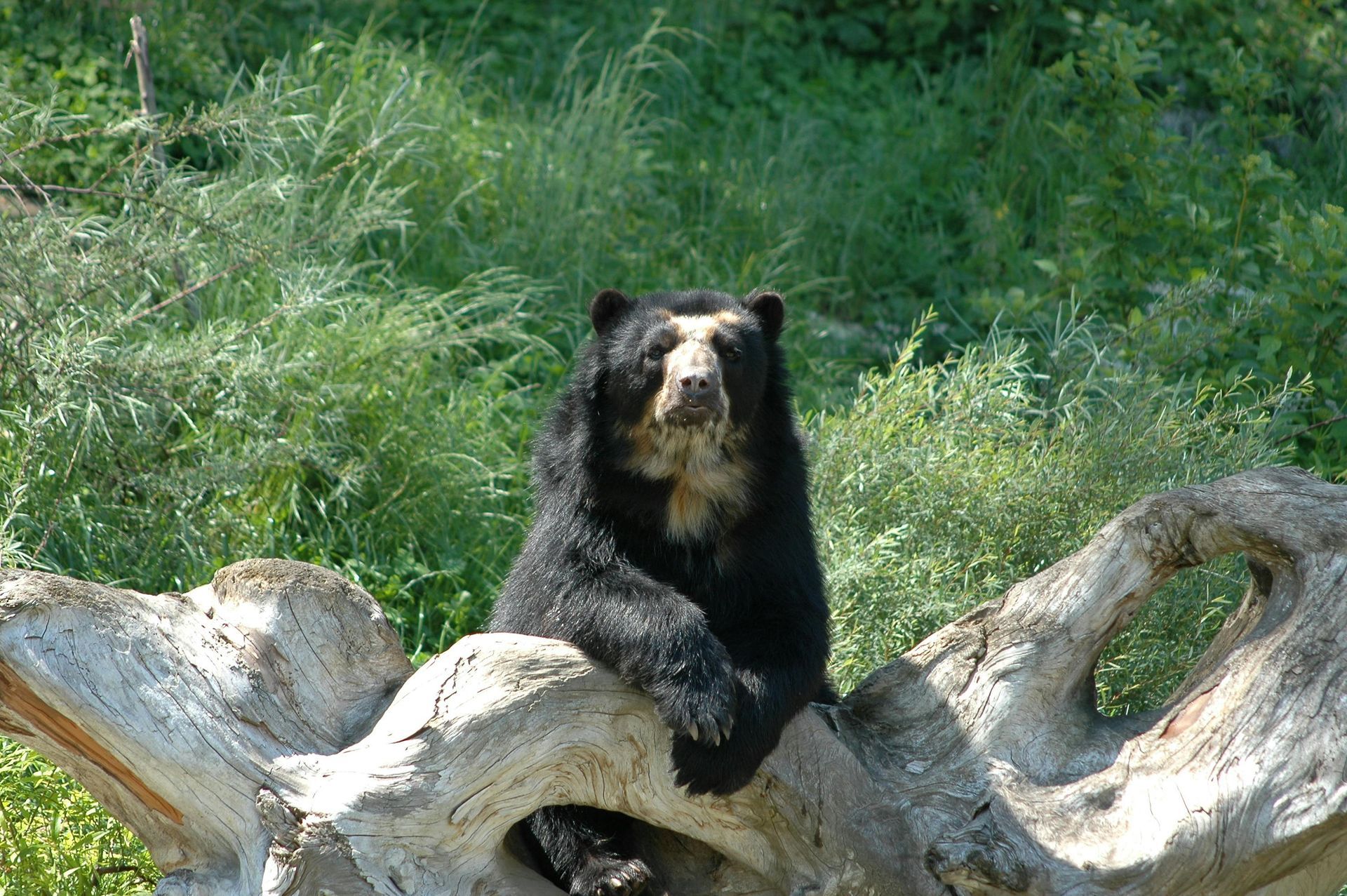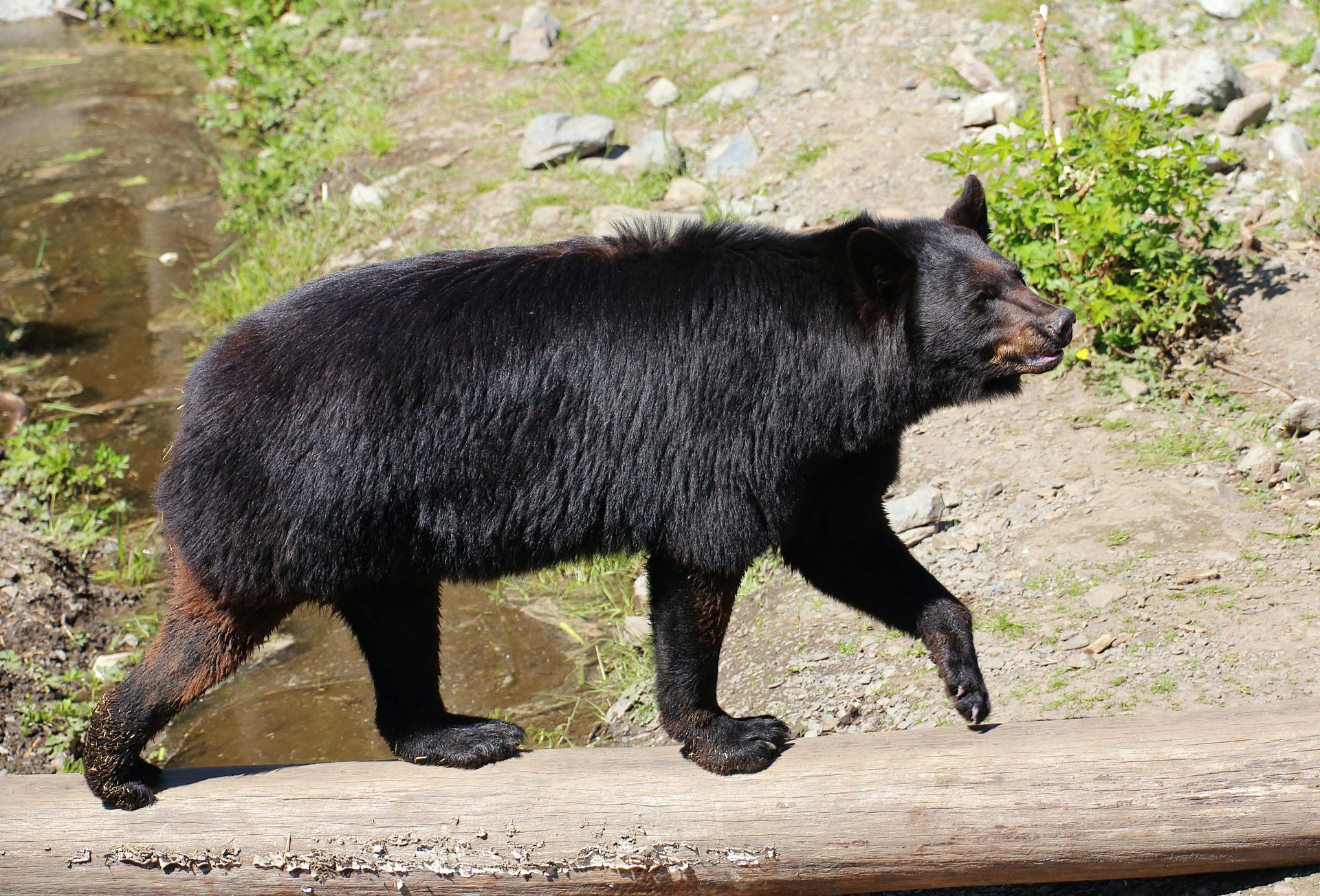Bears are large, powerful mammals known for their intelligence, adaptability, and diverse diets. Bears live in varied ecosystems: forests, mountains, tundras, and grasslands, and live in nearly every continent on earth. As apex predators and key ecosystem regulators, bears play an essential role in seed dispersal, controlling prey populations, and maintaining healthy habitats.
Most bear species have a stocky build, strong limbs, and non-retractable claws suited for digging, climbing, and foraging. Their fur varies in color, from black and brown to white in the case of polar bears. Depending on the species, bears can range from the small sun bear, weighing around 60 pounds, to the massive polar bear, which can exceed 1,500 pounds.
Bears are omnivorous, with diets that include fruits, nuts, roots, fish, small mammals, and insects. Some species, like the giant panda, have specialized diets, while others, like the grizzly bear, exhibit seasonal eating habits, consuming large amounts of food before hibernation. Mating occurs in warmer months, with cubs born during winter in dens. Mothers fiercely protect their young until they are independent.
Bears have few natural predators aside from humans, who pose the greatest threat through habitat destruction, poaching, and climate change. Conservation efforts focus on preserving their habitats and mitigating human-wildlife conflicts

For your safety and the well-being of wildlife, please observe animals from a distance and avoid touching or disturbing them. If you encounter an animal that appears injured or in distress, contact a licensed wildlife rescue organization for guidance before intervening.
Found An Animal? Not sure how to help a wild animal in need? Learn when to step in, who to call, and how to help safely.
Did You Know?
- Bears have an excellent sense of smell, even stronger than that of dogs, helping them locate food from miles away.
- Despite their size, some bears, like black bears, are skilled climbers and can scale trees with ease.
- Brown bears, including grizzlies, can run up to 35 mph over short distances.
- Polar bears are considered marine mammals due to their dependence on sea ice for hunting and strong swimming abilities.
- Unlike the common myth, not all bears hibernate—some, like the panda and polar bear, remain active year-round.
- A bear’s diet can change drastically with the seasons, from plant-based foods in spring and summer to high-protein meals in preparation for winter.
- Bears are highly intelligent and have been observed using tools, solving puzzles, and exhibiting problem-solving behaviors.
- Cubs stay with their mothers for up to two years, learning essential survival skills before becoming independent.
Problems Faced In The Wild
- Habitat Loss: Deforestation, urban development, and agricultural expansion reduce bear habitats.
- Climate Change: Rising temperatures affect food availability and impact hibernation patterns, particularly for polar bears.
- Human-Wildlife Conflict: Bears that venture into human settlements face risks of relocation or euthanasia.
- Poaching and Illegal Trade: Some species are targeted for their fur, bile, or body parts for traditional medicine.
- Vehicle Collisions: Roads and highways fragment habitats and pose a danger to wandering bears.
- Food Scarcity: Overharvesting of natural food sources and competition with humans for resources can lead to starvation.
Tips For Cohabitation
- Secure Trash and Food Sources: Use bear-proof containers and avoid leaving food outside to prevent bear encounters.
- Respect Bear Habitat: Keep a safe distance in the wild and avoid disturbing dens or feeding sites.
- Use Bear Deterrents: Carry bear spray when hiking in bear country and make noise to avoid surprising them.
- Avoid Attractants: Do not leave pet food, birdseed, or other food sources accessible to bears.
- Follow Local Guidelines: Adhere to bear safety regulations and report bear activity responsibly.
- Drive Cautiously in Bear Areas: Watch for bears crossing roads, particularly in forested or mountainous regions.



